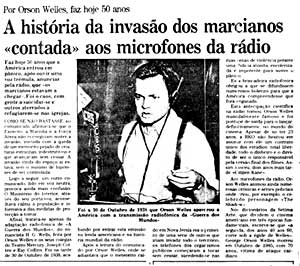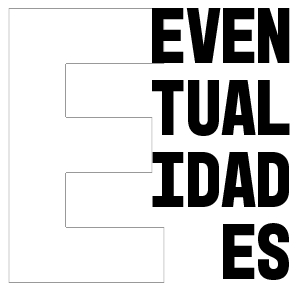
orson welles: surto de “realidade aumentada”
The War of the Worlds was an episode of the American radio drama anthology series Mercury Theatre on the Air. It was performed as a Halloween episode of the series on October 30, 1938, and aired over the Columbia Broadcasting System radio network. Directed and narrated by actor and future filmmaker Orson Welles, the episode was an adaptation of H. G. Wells’s novel The War of the Worlds
The first two thirds of the 60-minute broadcast were presented as a series of simulated “news bulletins”, which suggested to many listeners that an actual alien invasion by Martians was currently in progress. Compounding the issue was the fact that the Mercury Theatre on the Air was a “sustaining show” (it ran without commercial breaks), adding to the program’s realism. Although there were sensationalist accounts in the press about a supposed panic in response to the broadcast, the precise extent of listener response has been debated.
In the days following the adaptation, however, there was widespread outrage and panic by certain listeners who had believed the events described in the program were real.[1] The program’s news-bulletin format was decried as cruelly deceptive by some newspapers and public figures, leading to an outcry against the perpetrators of the broadcast. The episode secured Welles’s fame.
http://en.wikipedia.org/wiki/The_War_of_the_Worlds_(radio_drama)
paik: ao vivo e em rede
The 1977 ‘documenta’ show, which became known as the ‘media documenta’, opened its doors with a live satellite telecast from Kassel. The public broadcasting companies Hessisches Rundfunk and WDR invited three artists to present a 10-minute programme respectively. As well as Joseph Beuys and Douglas Davis, Nam June Paik appeared together with Charlotte Moorman and used the slot for a Dadaistic, allusive excursion through his performance and installation works. However, the committment of the ARD network did not end with the opening broadcast:
‘WDR television is allowing the broadcasting of various videotapes on nine different evenings as part of the ‘documenta 6’. The series of broadcasts will allow people to view in their own homes art-works on show at the ‘documenta’. The programmes will broadcast art – of varying, even antithetical, styles – as opposed to mere coverage of art,’ said Wulf Herzogenrath, Curator of Media at the ‘documenta 6’.

